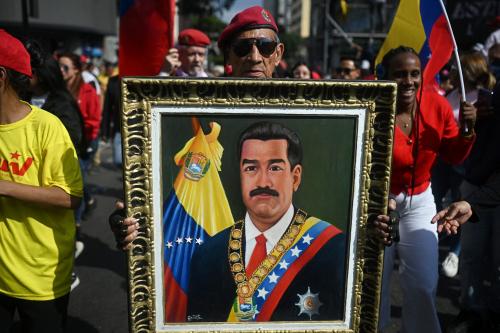An estimated 19,000 people have died in Syria since the conflict began in March 2011. But well over a million Syrians have been forced to flee their homes and the number is increasing. In fact, people are reportedly being displaced multiple times within Syria as they search for safety. If history is any guide, the displacement crisis in Syria is likely to create further tensions and to last much longer than anyone now anticipates.
The United Nations refugee agency reports that it has registered over 117,000 Syrian refugees in the neighboring countries of Turkey, Lebanon, Jordan and Iraq. These numbers probably underestimate the number of Syrian refugees in the region as many are staying with family or friends and simply do not register. While the largest number of registered refugees are in Turkey, it is telling that over 7,000 Syrians have sought safety in Iraq; the two countries only normalized relations in early 2011 and it wasn’t that long ago that hundreds of thousands of Iraqis sought protection from their country’s violence by moving to Syria. And in fact, at least until earlier this year, there were still more than 100,000 Iraqis registered with UNHCR in Syria, down from some 150,000 in August 2010. Many of the Iraqi refugees have undoubtedly returned home; some with the assistance of the Iraqi government which sent planes to Syria to bring some of them home. For the other countries in the region, the arrival of thousands of desperate Syrians on their borders leads to fears that the violence in Syria will spill over into their countries and strains infrastructure. Refugee camps have been and are being established and the international community is mobilizing support for the refugees – and for the governments that host them. Although the host populations seem to have responded generously to the new arrivals, there have been a few signs that their presence might not be so popular and tensions may well increase if the Syrian conflict drags on.
But the refugees in neighboring countries, in spite of sometimes harrowing journeys and difficult conditions, are luckier than those who are displaced within Syria’s borders. Internally displaced persons (IDPs) are closer to the violence than refugees and more difficult to assist. The Syrian Arab Red Crescent revised its estimates of the number of Syrians displaced internally from 500,000 a few weeks ago, to one million last week, to 1.55 million a few days ago.
Collecting accurate statistics on IDPs in times of war is always problematic, but if these figures are accurate, they indicate that more than one in twenty Syrians have been displaced within the country and that there are more than ten times as many IDPs as registered refugees. Many have been displaced more than once, fleeing from Homs to Damascus, for example, and then moving elsewhere in search of safety. The Syrian Arab Red Crescent has had to evacuate shelters housing IDPs when the conflict got too close. While the Syrian Arab Red Crescent is encouraging those who fled to Damascus to return to their homes, many cannot return because their homes have been damaged. Given the security situation, it is difficult for aid workers to deliver assistance to the displaced – or even to identify them when they live with host families. The Syrian Arab Red Crescent, which channels most humanitarian relief inside Syria, reports that it has only been able to reach two-thirds of the IDPs. Working with IDPs is dangerous for humanitarian workers as the Syrian Arab Red Crescent has already lost four staff to the violence.
While people have been displaced for the past sixteen months, as the violence escalates, the pace of displacement is picking up. When fighting erupts in a neighborhood, people grab what they can and flee toward a place they hope will be safe. But while displacement is occurring quickly, experience shows that it can take a long, long time for solutions to be found. And the longer displacement lasts, the more likely that hospitality of friends and family runs out and the more difficult it becomes to find solutions.
The Middle East has the dubious distinction of having the world’s longest refugee crisis as the Palestinians enter their sixty-fourth year. It is in everyone’s interests – the refugees and IDPs, the governments of host countries, the humanitarian agencies already stretched thin with other crises – that the conflict in Syria be brought to an end. It is also in everyone’s interest that the displaced receive the support they need. Presently, only one-fifth of the UN’s Office for the Coordination of Humanitarian Affairs appeal of $180 million to aid those displaced within Syria has been received. And only 26 percent of the $192 million appeal to assist Syrian refugees throughout the region has been funded.
More funds are needed, urgently needed. But providing funds (hard as it is these days) is an easier task than bringing an end to the violence. Until the international community – or the armed opposition – can bring this war to an end, parents will continue to grab their children, fork over money to smugglers, and run in search of safety.
The Brookings Institution is committed to quality, independence, and impact.
We are supported by a diverse array of funders. In line with our values and policies, each Brookings publication represents the sole views of its author(s).



Commentary
Syrian Displacement: The Human Consequence of the Continuing War
July 24, 2012